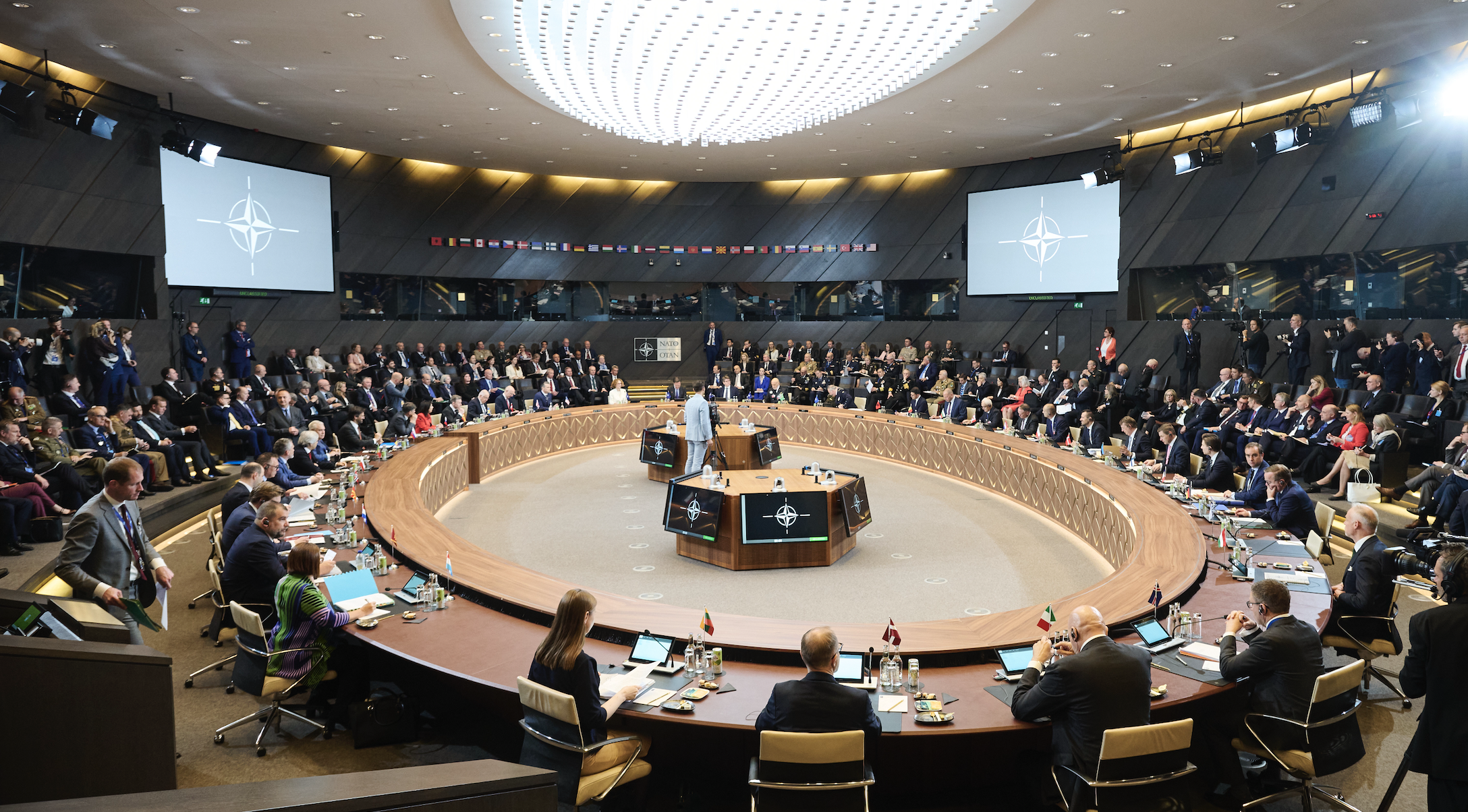Our Policy Series on the 2025 NATO Summit
 Meeting of the North Atlantic Council Defence Ministers’ Session, June 5, 2025/NATO image
Meeting of the North Atlantic Council Defence Ministers’ Session, June 5, 2025/NATO image
Welcome to our Policy series on the June 24-26 NATO summit in The Hague, Netherlands. The 76-year-old North Atlantic Treaty Organization’s leaders meet amid the unprecedented disruption of an unreliable and economically coercive American president, whose demand for an ultimate increase in domestic defence spending by members to 5% is on the agenda. On June 9th, Canadian Prime Minister Mark Carney announced an increase in Canada’s defence spending to 2%, as an immediate goal. On these and the many other issues, preoccupations and implications of the summit, we have a selection of must-read pieces. We thank all our Policy contributors for their thoughtful contributions to the series.
We begin with a summit tour d’horizon by Policy contributing writer, former senior diplomat and CGAI Global Exchange podcast host Colin Robertson, who looks at the flurry of multilateral diplomacy this June — including the Kananaskis G7, the Canada-EU meeting in Brussels and the NATO Summit — as an early test of Canadian Prime Minister Mark Carney’s foreign policy shrewdness. Robertson has filed the perfect crossover piece for our G7 and NATO pre-summit packages: Canada Needs More World: Mark Carney’s Summitry Launch.
From Carleton University’s Elinor Sloan, a look at Canada’s shifting orientation within the 76-year-old Alliance in response to the drastic change in America’s geopolitical role under Donald Trump. “The Trump administration’s sometimes hostile approach to NATO has been a wake-up call for all allies,” writes Sloan. “It has sparked a major European rearmament initiative, prompted Canada to actively seek to join the effort, and helped bring about its own major defence funding increase.” Here’s Elinor Sloan with Canada’s Role in the New Transatlantic Security Dynamic.
Weapons are not what they used to be. “The convergence of Artificial Intelligence/Machine Learning (AI/ML), autonomous technologies, cyber-physical systems (CPS), and the Internet of Things (IoT) presents both unprecedented opportunities and significant risks to society, national security, and the resilience of critical infrastructure,” write Concordia University‘s Kash Khorasani and PhD student Mohammadreza Nematollahi, whose research is informing NATO policy on the future of defence systems. We strongly recommend their piece, Where Policy Meets Technology: Modernizing NATO’s Defence Systems.
Our Canada and the World columnist, Jeremy Kinsman, has served as Canada’s ambassador to Russia, to the European Union, to Italy and as high commissioner to the UK. “In 2025, beneficial multilateralism and neighbourly bilateralism lost their reliability, one slowly and the other all at once,” writes Kinsman. With a sweeping look at the history behind the current state of NATO and the global context of Canada’s stark choices, here’s Jeremy Kinsman with War and Peace, 2025: Canada, NATO, and a Rogue America.
And, from our Policy Emerging Voices section of pieces filed by rising-star graduate students, a NATO piece from Michael Black, graduate student at the Max Bell School of Public Policy at McGill University, on the all-important procurement angle. “NATO’s ambitious goals risk colliding head-on with the realities of strained industrial capabilities,” writes Black, “unless decisive steps are taken now to scale up production across the alliance.” Here’s Michael Black with Beyond Spending: How Collaboration Can Solve NATO’s Production Problem.
We’ll be posting more pieces as the NATO Summit approaches…
In related Policy links, here’s our 2024 NATO 75th Anniversary Package.
